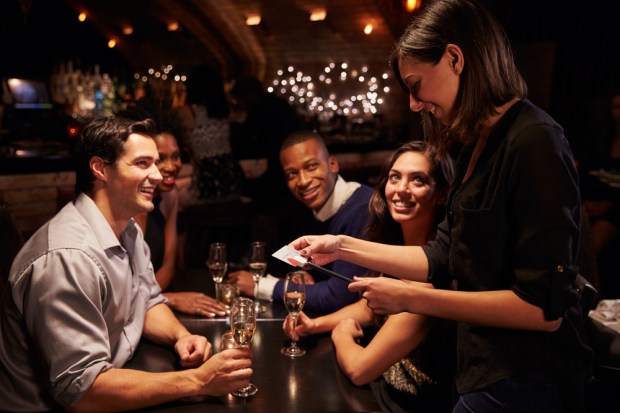How Restaurants Can Navigate Haters And Learn From Mistakes

Taking criticism is not an easy skill, for individuals or for businesses — and anonymous digital criticism is the worst kind. Amateur aficionados and would-be food critics are not known for exercising their mental filters, or any restraint, when posting about their restaurant experiences online.
But, if critiques can be given and received gracefully, there’s a lot of potential value. Restaurateurs understand that knowing what customers did or did not like about their dining experience is a growth opportunity for the whole team, from the chef and hostess to the waiter and bartender.
So, how can restaurants solicit constructive feedback, while also mitigating the harm done by customer rants which may not always be objective or fair?
There are several platforms and products claiming to address this issue. A common thread among them is the invitation element. Rather than waiting for customers to take to social media with their complaints, restaurant owners can give customers a chance to make their point in a place and time where it can be addressed by the establishment.
Of course, there will always be difficult customers who take to Twitter, Yelp and other social platforms to air their displeasure. Everybody loves a good rant when they feel they’ve been wronged. But, it’s possible that by creating a space to say it to the restaurant’s face could cut down on surprise negative reviews by letting customers know they’ve been heard — and that their experiences matter to management.
Tableside Tablets
One new platform that’s creating such an opportunity is the restaurant feedback technology Yumpingo, created by celebrity chef Jamie Oliver and U.K. Mexican-style street food restaurant Wahaca. The tablet-based system invites customers to leave a one-minute review before leaving the restaurant to help chefs develop the menu.
It’s a quantifiable, data-driven approach to something incredibly personal and subjective: taste. And, as Eater London notes, it doesn’t just give unhappy customers a place to vent — it also drums up feedback from the “silent majority” that had an acceptable experience somewhere between one and five stars.
HowYa is another tablet-based customer engagement platform taking a similar approach. Again, its goal is to make space for instant feedback surrounding concerns, needs and issues — and also for instant responses by the restaurant to make the situation right before it turns into a negative online review.
A big element of HowYa is to unmask developing customer trends. While Yumpingo takes a granular view of the menu, HowYa takes a bird’s-eye view of who is at the restaurant, tracking demographics of survey respondents to develop better marketing campaigns.
A third platform, Servy, only solicits feedback from opted-in, mystery diners. While these reviewers aren’t professionals, they are taking the experience seriously and are in it to provide thoughtful feedback. As EatOut notes, many chefs find reviews from regular people just as valuable, if not more so, than ones from professionals, since they represent the average diner’s experience.
Even though Servy does claim to offer “more data,” its focus is clearly on the quality, not quantity, of feedback. This provides insight restaurant owners can truly leverage to grow and improve their businesses.
Don’t want all those greasy fingers on the touchscreen? Some restaurants are using projected displays with interactive touch technology. The display goes away when not in use and can be used for more than just feedback — it can support ordering, paying, calling wait staff to the table or playing games while the food is being prepared.
Strategic Solicitation
Wise chefs recognize that a bad review doesn’t necessarily mean they have to change something, just that they should give something due consideration. As they often do in the kitchen, chefs take unsolicited commentary with a grain of salt.
That’s why it’s so important to make sure good, thoughtful feedback is coming in along with the anonymous internet drivel. If the restaurant truly has an issue, it won’t just show up in one random customer’s Yelp review. It’ll show up in several of them or, if the establishment offers a feedback mechanism like those above, it’ll show up in the data.
For example, when large chains like Chili’s use tablets for payments, loyalty rewards, games and customer feedback, Forbes says that information collected from individual restaurants can be compared with data from the whole and help each location recognize its areas of strength and weakness.
Small Biz Trends recommends some top questions to include in a restaurant customer survey: What the customer did and didn’t like, how they felt about the selection of beverages and healthy choices, the speed and capability of the staff, environment and cleanliness and, finally, whether diners would recommend the establishment to a friend based on their experience.
Chef George Jardine of the Stellenbosch restaurant Jordan told EatOut that hands-on managers should already be aware of what’s going on in the establishment and therefore should know whether a negative review is valid. A bad review should not come as a surprise — or at all, since a smart manager who learns of an issue will address it while the customer is still at the restaurant, before the bad review can be written.
At the same time, Jardine and other chefs who spoke with EatOut agreed: While bad reviews can spoil a career, it doesn’t do to dwell on them.
“Restaurants that are real businesses are not in a popularity contest to see which blogger or magazine likes you or not,” Jardine told EatOut. “It becomes like the dog chasing its tail. When guests return — this is what it’s all about.”